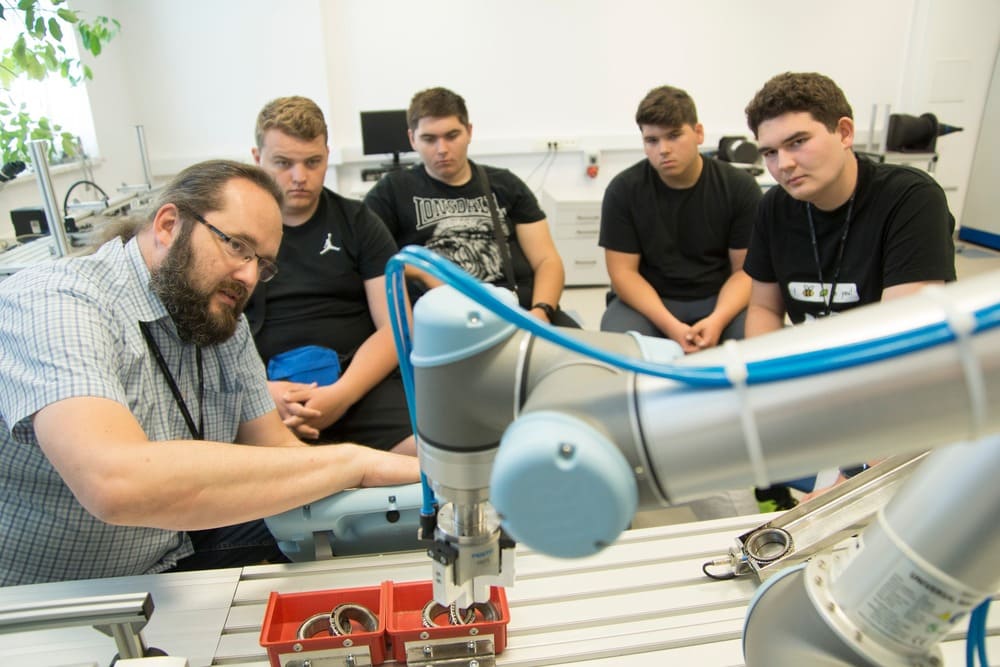Type of course:
Digital learning, Path
Language:
EN
Duration:
5 hours
Workload:
9 hours
Proficiency:
Intermediate
Target:
Manager, Workers, Professionals
This course is officially recognised and labelled by the European Institute of Innovation and Technology (EIT). EIT Label is a quality mark awarded to programmes demonstrating outstanding innovation, educational excellence and societal impact.
Safety and reliability are crucial considerations in the development and deployment of Artificial Intelligence (AI) systems, particularly in safety-critical domains such as healthcare, transportation, and defense. These systems must be designed to operate safely and reliably, without causing harm to humans or the environment.
Here are some key considerations for ensuring safety and reliability in AI systems:
1. Data Quality: The quality of the data used to train and test the AI system is critical to its safety and reliability. Any errors or biases in the data can lead to incorrect decisions and potentially harmful outcomes. It is important to ensure that the data is accurate, representative, and free of biases.
2. Robustness: AI systems should be designed to operate robustly in a wide range of scenarios, including those that were not encountered during the system’s development and testing. This can be achieved through techniques such as adversarial training and stress testing.
3. Explainability: As mentioned earlier, explainability is an important consideration for ensuring the safety and reliability of AI systems. By providing explanations for the decisions made by the system, users can better understand how it works and identify any potential issues.
4. Testing and Validation: AI systems should be thoroughly tested and validated before deployment to ensure that they operate safely and reliably. This includes testing for edge cases and unexpected scenarios that may not have been encountered during development.
5. Human Oversight: In many safety-critical applications, it is important to have human oversight of the AI system to ensure that it is operating as intended and to intervene if necessary. This can include techniques such as human-in-the-loop and human-on-the-loop.
6. Regulatory Compliance: Many safety-critical applications are subject to regulatory frameworks that require AI systems to meet certain safety and reliability standards. It is important to ensure that the system complies with these standards.
In Safety and Reliability in AI Systems, you will learn how to adress those considerations to allow a A.I. system to operate safely and reliably.
Learning outcomes
- At the conclusion of Safety and Reliability learning path, the learner will be able to compare different algorithm training approaches aiming to improve the reliability and cybersecurity of an specific AI system in a stable and in a flexible manufacturing environment to guarantee that its performance, autonomy and security overcome its previous stage at the same manufacturing environment.
- At the conclusion of Safety and Reliability learning path, the learner will be able to examine assessment metrics searching the most adapted ones for the assessment of the effectiveness and resilience of a specific AI system in a stable and in a flexible manufacturing environment to guarantee the further correct comparison of effectiveness and resilience between different AI systems at the same manufacturing environment.
- At the conclusion of Safety and Reliability learning path, the learner will be able to compare a set of AI models regarding their capacity of generalization for a specific AI system in a stable and in a flexible manufacturing environment with an accuracy rate of 60% when choosing the most generalizable one.
LessonA.I. for optical active alignment: ISP System®'s use case
Course Content
LessonIntroduction to safety and reliability of AI systems
Course Content
LessonTrust and Trustworthy Artificial Intelligence (AI)
LessonCybersecurity threats to AI systems
Course Content
LessonSafety and Reliability in AI introductory formative assessment
Course Content
LessonGeneralization of Machine Learning models - Concepts (part 1)
Course Content
LessonGeneralization of Machine Learning models - Concepts (part 2)
Course Content
LessonGeneralization of Machine Learning models - Metrics
Course Content
LessonReproducibility of Machine Learning (ML / AI) models
Course Content
LessonGeneralization and Reproducibility of ML/AI models formative assessment
Course Content
LessonGeneralization and Reproducibility of AI models task
Course Content
LessonRobustness of AI systems - Evasion attacks and mitigations
Course Content
LessonRobustness of AI systems - Poisoning Attacks and Mitigations
Course Content
LessonRobustness of AI systems - Privacy Attacks
Course Content
LessonArtificial Intelligence (AI) and Security
Course Content
LessonPersonal Data and Privacy in Artificial Intelligence (AI)
LessonRobustness of AI systems chapter formative assessment
Course Content
LessonSafety and Reliability in AI Systems: Learning Path Conclusion
Course Content
LessonSafety and Reliability in AI Systems: Learning Path Final Evaluation
Course Content
Topics
Digital Transformation, Artificial Intelligence (AI)
 Explainability in Artificial Intelligence Systems
Explainability in Artificial Intelligence Systems  Cyber-Physical Production Systems (691 LP)
Cyber-Physical Production Systems (691 LP)  Maintainability of AI Systems
Maintainability of AI Systems  Safety and Reliability in AI Systems
Safety and Reliability in AI Systems 









